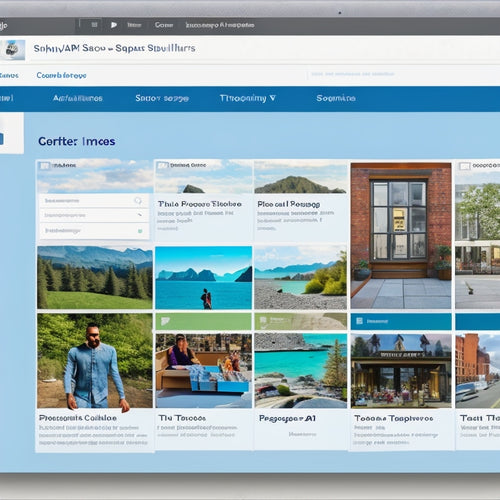
Optimization Shopify Apps Focus on Boosting Site Performance, Enhancing User Experience, and Improving Conversion Rates
Share
This article discusses the importance of optimization Shopify apps in improving website performance, enhancing user experience, and increasing conversion rates.
The objective of this study is to provide insights into the benefits of using such apps and offer tips for SEO optimization.
Additionally, helpful tutorials and resources for Shopify optimization tools are presented.
By adopting these strategies, website owners can effectively optimize their Shopify stores to achieve better results in terms of performance, user satisfaction, and sales conversions.
The key takeaways and insights from this discussion highlight the importance of optimization Shopify apps in increasing site performance, enhancing user experience, and improving conversion rates. By implementing best practices in optimizing their Shopify apps, businesses can effectively improve various aspects of their e-commerce websites.
Key Takeaways:
-
Performance Optimization: Optimizing Shopify apps can significantly improve site performance by reducing page load times and minimizing server requests. This ensures a smooth browsing experience for users and encourages them to stay on the website longer.
-
User Experience Enhancement: With optimization Shopify apps, businesses can enhance the overall user experience by providing intuitive navigation, easy-to-use interfaces, and personalized recommendations. These factors contribute to increased customer satisfaction and higher engagement levels.
-
Conversion Rate Improvement: By streamlining checkout processes, implementing effective product search functionalities, and offering personalized shopping experiences, optimization Shopify apps can help boost conversion rates. This leads to increased sales and revenue generation for businesses.
-
Scalability and Flexibility: Utilizing optimization Shopify apps allows businesses to scale their operations efficiently while maintaining flexibility. These apps offer customizable features that cater to specific business requirements, ensuring seamless growth opportunities.
Benefits of Optimization Shopify Apps
Optimization Shopify apps offer a range of benefits to improve the performance and user experience of an e-commerce website. These apps focus on key areas such as speeding up page load, enhancing user navigation, increasing conversion rates, streamlining the checkout process, and improving mobile performance. By incorporating these apps into their platform, online businesses can optimize their website for better speed, ease of use, and customer satisfaction.
| Key Benefits of Optimization Shopify Apps |
|---|
| Speeding up Page Load |
| Enhancing User Navigation |
| Increasing Conversion Rates |
| Streamlining Checkout Process |
| Improving Mobile Performance |
Speeding up Page Load
Enhancing page load speed is a crucial aspect of optimizing Shopify apps for improved site performance, enhanced user experience, and higher conversion rates.
Improving site speed has a direct impact on reducing bounce rate, which refers to the percentage of visitors who leave a website after viewing only one page. A slow-loading website frustrates users and increases the likelihood that they will abandon the site before exploring further.
Studies have shown that even a one-second delay in page load time can result in a significant decrease in conversions. By focusing on speeding up page load, Shopify app developers can create a seamless browsing experience for users, leading to increased engagement and ultimately higher conversion rates.
Implementing techniques such as image optimization, minification of code, caching, and content delivery network (CDN) integration can effectively enhance page load speed and reduce bounce rate.
Enhancing User Navigation
User navigation plays a crucial role in ensuring a seamless browsing experience and promoting engagement on websites. By improving website design and streamlining the navigation process, website owners can effectively reduce bounce rates and increase user satisfaction.
A well-designed navigation system allows users to easily find the information they are looking for, navigate between pages, and complete desired actions. It is important to consider factors such as menu structure, placement of navigation elements, and intuitive labeling to enhance user experience.
Additionally, incorporating features like breadcrumbs, search functionality, and clear call-to-action buttons can further facilitate user navigation. By focusing on enhancing user navigation, website owners can create an intuitive and efficient browsing experience that encourages users to explore more pages and stay engaged with the content.
Increasing Conversion Rates
To effectively increase conversion rates on a website, it is important to carefully analyze and optimize the various elements of the user journey. This includes optimizing landing page design, call-to-action placement, and persuasive copywriting techniques. Conversion rate strategies aim to improve the percentage of visitors who take a desired action on a website, such as making a purchase or filling out a form.
One key aspect of increasing conversion rates is optimizing product pages. Product pages should provide clear and concise information about the product, including its features, benefits, and pricing. High-quality images and videos can also be used to showcase the product from different angles and perspectives.
Furthermore, incorporating customer reviews and testimonials can help build trust and credibility with potential buyers. Including social proof in this way can alleviate any concerns or doubts customers may have about the product's quality or effectiveness.
Streamlining Checkout Process
The checkout process on a website can be streamlined by simplifying the steps required for customers to complete their purchase. By reducing the number of unnecessary fields and minimizing distractions, the checkout process becomes more efficient and user-friendly. This optimization technique is crucial in improving cart abandonment rates and reducing bounce rate.
Studies have shown that a complicated or lengthy checkout process often leads to frustrated customers abandoning their carts before completing their purchase. To address this issue, website owners can implement strategies such as auto-filling customer information, providing guest checkout options, and offering multiple payment methods.
Additionally, displaying progress indicators throughout the checkout process helps users understand how many steps are left, increasing transparency and reducing anxiety. By implementing these optimizations, websites can enhance the overall user experience and significantly improve conversion rates.
Improving Mobile Performance
Mobile performance can be improved by implementing strategies that optimize website loading speed, reduce page size, and prioritize content delivery.
Improving mobile responsiveness is crucial for providing a seamless user experience on smartphones and tablets. One effective strategy is optimizing images for mobile. This involves compressing images to reduce their file size without compromising their quality. Additionally, using responsive image techniques such as adaptive images or lazy loading can help minimize the impact of large image files on mobile devices.
Another important aspect of improving mobile performance is reducing page size by minimizing unnecessary elements like excessive JavaScript or CSS code. Prioritizing content delivery by utilizing techniques like asynchronous loading or caching can also significantly enhance mobile performance.
Tips for SEO Optimization
Implementing relevant keywords, optimizing meta tags, and improving site structure are essential steps for achieving effective SEO optimization. By following these SEO strategies and best practices, businesses can increase their online visibility, attract more organic traffic, and improve their search engine rankings.
To optimize a website for search engines, consider the following tips:
-
Conduct keyword research: Identify the most relevant keywords related to your business or industry. Utilize tools like Google Keyword Planner or SEMrush to find popular and high-ranking keywords.
-
Optimize meta tags: Craft compelling title tags and meta descriptions that accurately describe the content of each webpage. Incorporate target keywords naturally while keeping them concise and engaging.
-
Improve site structure: Organize your website's pages in a logical hierarchy and create clear navigation menus. This ensures that search engines can easily crawl and index your content.
-
Create high-quality content: Publish informative, well-written articles that provide value to your audience. Incorporate target keywords strategically throughout the content while maintaining readability.
-
Build high-quality backlinks: Seek opportunities to acquire backlinks from reputable websites within your industry. These links act as votes of confidence for search engines and help improve your website's authority.
Helpful Tutorials for Shopify Optimization
One valuable resource for businesses seeking to improve their Shopify website's performance is a collection of helpful tutorials. These tutorials provide step-by-step instructions on how to optimize various aspects of a Shopify site, such as page load speed, mobile responsiveness, and user experience. By following these tutorials, businesses can implement best practices for Shopify optimization and achieve better overall performance.
Shopify optimization case studies are often included in these tutorials, providing real-world examples of successful optimizations. These case studies analyze the before-and-after effects of implementing specific optimization techniques, allowing businesses to understand the potential impact on their own website performance.
The tutorials cover a wide range of topics related to Shopify optimization. They provide guidance on optimizing images and videos for faster loading times, improving navigation and site structure for better user experience, and implementing SEO strategies to boost search engine rankings. Additionally, they offer insights into utilizing analytics tools to monitor website performance and identify areas that require further optimization.
Additional Resources for Shopify Optimization Tools
In addition to the helpful tutorials mentioned earlier, there are several additional resources available for optimizing Shopify websites. These resources provide a range of tools and best practices that can help boost site performance, enhance user experience, and improve conversion rates.
Here are some recommended resources for Shopify optimization:
-
Shopify App Store: The official app store offers a wide selection of apps specifically designed to optimize Shopify websites. These apps cover various aspects of optimization such as page speed, image compression, SEO enhancements, and more.
-
Shopify Experts: Shopify has a network of certified experts who can assist with website optimization. These experts have extensive knowledge and experience in optimizing Shopify sites and can provide tailored solutions based on specific needs.
-
Online Communities: Joining online communities like forums or social media groups focused on ecommerce or Shopify can be an excellent way to learn from others' experiences and gain insights into effective optimization strategies.
-
Blogs and Publications: Many experts in the field regularly publish blog posts and articles discussing best practices for optimizing Shopify websites. Subscribing to these blogs or following them on social media platforms allows access to up-to-date information on the latest techniques and trends.
-
Webinars and Online Courses: Several organizations offer webinars or online courses dedicated to teaching strategies for improving website performance on the Shopify platform. These resources often provide in-depth guidance on optimization techniques through interactive sessions led by industry professionals.
Learn More About Shopify Optimization Tools
Utilizing a range of recommended resources, businesses can explore various tools and strategies for enhancing their Shopify websites. In order to optimize their Shopify sites, businesses should consider implementing a set of best practices that focus on boosting site performance, enhancing user experience, and improving conversion rates.
One key strategy for optimizing a Shopify website is to ensure fast page loading times. Slow-loading pages can lead to high bounce rates and lower conversions. Businesses can use tools such as PageSpeed Insights or GTmetrix to analyze their website's speed performance and identify areas for improvement.
Another important aspect of Shopify optimization is mobile responsiveness. With the increasing use of smartphones for online shopping, it is crucial for businesses to have a mobile-friendly website that provides a seamless browsing and purchasing experience. Tools like Google's Mobile-Friendly Test can help businesses assess the mobile-friendliness of their site and suggest improvements.
Additionally, businesses should focus on optimizing their product pages by including high-quality images, detailed descriptions, customer reviews, and clear call-to-action buttons. These elements not only enhance the user experience but also contribute to higher conversion rates.
Furthermore, implementing search engine optimization (SEO) techniques can improve the visibility of a Shopify website in search engine results pages. By using relevant keywords in product titles, meta tags, URLs, and content, businesses can increase organic traffic to their site.
Frequently Asked Questions
How Do Optimization Shopify Apps Contribute to Boosting Site Performance?
Optimization Shopify apps contribute to boosting site performance by improving loading speed and increasing website responsiveness. These apps employ techniques such as image optimization, caching, and minification to optimize code and enhance overall user experience.
Can Optimization Shopify Apps Enhance User Experience on an E-Commerce Website?
Optimization Shopify apps can enhance user experience on an e-commerce website by improving website speed and loading time. Additionally, they offer benefits such as mobile optimization, which contributes to a smoother browsing experience for users.
What Are Some Effective Strategies for Improving Conversion Rates Using Optimization Shopify Apps?
Effective conversion rate optimization strategies using Shopify apps include implementing A/B testing, improving website loading speed, utilizing personalized product recommendations, optimizing checkout process, and integrating social proof.
Are There Any Specific SEO Optimization Tips That Can Be Implemented With the Help of Shopify Apps?
Implementing specific SEO optimization tips with the help of Shopify apps can be beneficial for improving website rankings and increasing organic traffic. Some recommended Shopify apps for SEO best practices include [App 1], [App 2], and [App 3].
Where Can I Find Additional Resources for Shopify Optimization Tools?
Shopify optimization tools can be found through various online resources, such as official Shopify documentation, forums, blogs, and third-party websites. These resources provide detailed information and recommendations on optimizing the performance of Shopify websites.
Related Posts
-

Optimizing SEO for Shopify: A Comprehensive Guide
This article provides a comprehensive guide on optimizing SEO for Shopify websites. It covers multiple aspects of SE...
-

How Do I Set up A Tracking Page on Shopify
This article aims to provide a comprehensive guide on setting up a tracking page on the Shopify platform. It explore...
-

How Would You Promote a Shopify App
Promoting a Shopify app through advertising offers a variety of benefits. This article aims to provide informative t...


